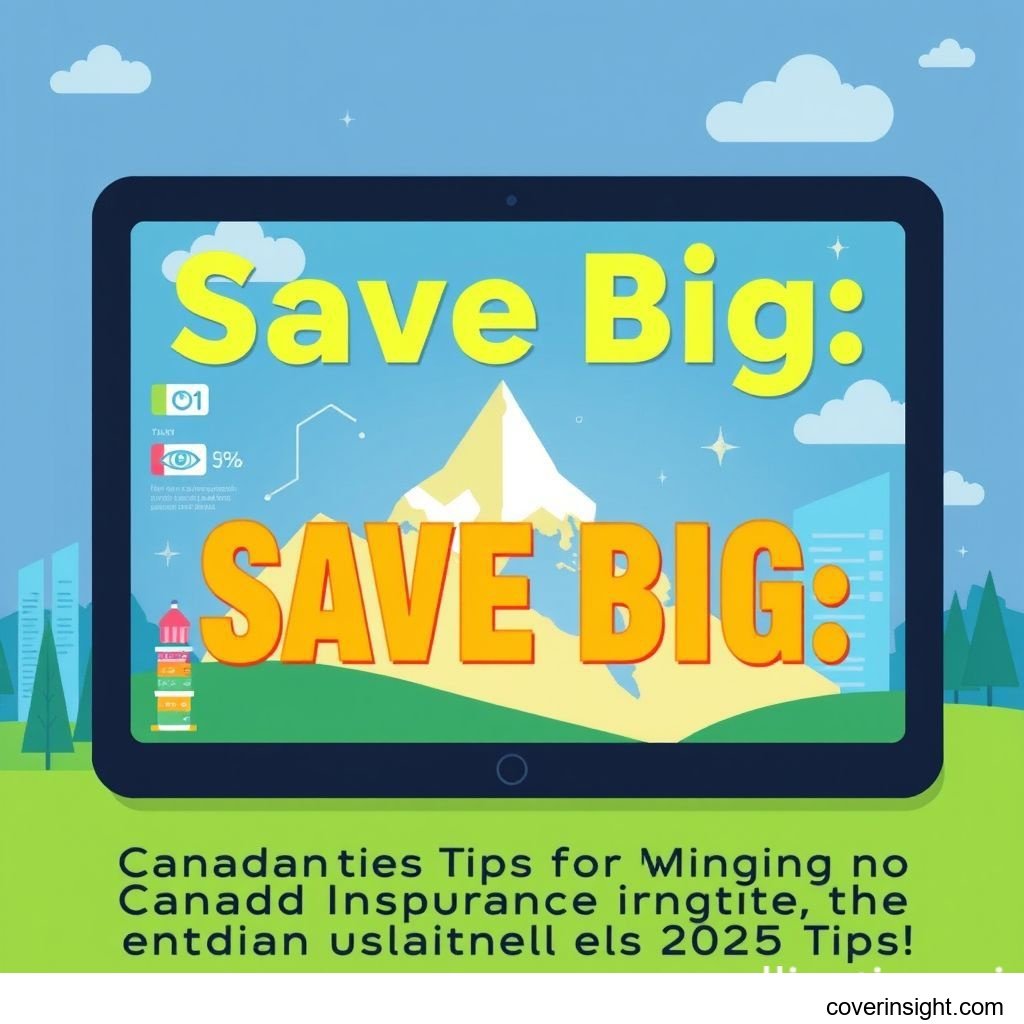Introduction
Securing comprehensive protection for your property is paramount for homeowners in British Columbia. As we look towards 2025, understanding the intricacies of home insurance Victoria BC is more critical than ever, particularly given evolving climate patterns and their potential impact on residential properties. A robust home insurance policy acts as a vital financial safeguard, shielding your most valuable asset from unforeseen damages and liabilities. This guide will delve into key aspects of coverage, cost factors, and crucially, smart strategies for mitigating the significant risk of water damage – a leading cause of claims in Canada.
Understanding Your Home Insurance Victoria BC Coverage
Navigating the landscape of home insurance Victoria BC requires a clear understanding of what a policy entails. Beyond basic protection, modern policies offer various levels of security against a multitude of perils.
What’s Included in Standard Policies
A typical home insurance policy in Victoria, BC, offers a multi-faceted approach to protection. It usually covers:
-
Dwelling Coverage: Protects the physical structure of your home, including attached garages and permanent fixtures, against specified perils like fire, wind, and vandalism.
-
Contents Coverage: Insures your personal belongings within the home, such as furniture, electronics, and clothing, up to a defined limit.
-
Personal Liability Coverage: Provides financial protection if someone is injured on your property, or if you accidentally cause damage to someone else’s property.
-
Additional Living Expenses (ALE): Covers costs like hotel stays and meals if your home becomes uninhabitable due to a covered claim.
Common Exclusions to Be Aware Of
While comprehensive, standard home insurance Victoria BC policies often contain exclusions. It is vital for homeowners to review their policy carefully and consider endorsements for complete peace of mind. Common exclusions typically include:
-
Flood Damage: Often differentiates between overland flood (water entering from the ground) and sewer backup. While sewer backup can often be added, overland flood coverage usually requires a separate endorsement.
-
Earthquake Damage: Given Victoria’s seismic zone, earthquake coverage is almost always an optional add-on.
-
Wear and Tear/Lack of Maintenance: Damage resulting from gradual deterioration or neglect is not covered.
-
Pest Infestations: Damage caused by insects, rodents, or other pests is generally excluded.
-
Landslide/Subsidence: Similar to floods, these perils may require specific endorsements.
For detailed information on types of coverage and exclusions across Canada, resources like the Insurance Bureau of Canada offer valuable insights.
Smart Water Damage Protection for Your Home Insurance Victoria BC
Water damage is consistently one of the most frequent and costly claims for home insurance Victoria BC policyholders. Proactive measures and smart technology can significantly reduce risk and potentially lower your premiums.
The Rising Threat of Water Damage
Victoria, like many coastal regions, faces increased precipitation and extreme weather events. This, combined with aging municipal infrastructure and household plumbing systems, elevates the risk of water-related incidents. From burst pipes and appliance leaks to heavy rainfall and sewer backups, the financial and emotional toll of water damage can be immense. Understanding your water damage coverage limits is critical here, as standard policies might not cover all types or severities of incidents.
Proactive Measures and Smart Home Technology
Investing in preventative measures and smart home technology is a strategic move for homeowners. Not only can these innovations prevent costly damage, but they can also positively impact your home insurance Victoria BC rates.
Here are key measures:
-
Regular Maintenance: Inspect and maintain plumbing, roofing, gutters, and downspouts regularly. Clear drains and eavestroughs to prevent overflow.
-
Appliance Hoses: Replace old, brittle appliance hoses (washing machines, dishwashers) every 3-5 years with reinforced or braided steel ones.
-
Water Leak Detectors: Install smart sensors in prone areas like basements, near water heaters, under sinks, and behind toilets. These devices alert you immediately to the presence of water.
-
Automatic Water Shut-Off Valves: These advanced systems detect leaks and automatically shut off the main water supply to prevent extensive damage.
-
Smart Irrigation Systems: For outdoor protection, smart sprinklers adapt to weather conditions, preventing overwatering that can contribute to foundation issues.
-
Sump Pumps: If your home has a basement, a well-maintained sump pump with a battery backup is crucial to prevent flooding during heavy rains.
Maximizing Your Water Damage Coverage Limits
To effectively manage water damage risk, it’s essential to understand and, if necessary, expand your water damage coverage limits. Standard policies often have sub-limits for certain types of water damage. Discuss with your insurer:
-
Sewer Backup Endorsement: Crucial for coverage against sewage or wastewater entering your home from municipal sewers.
-
Overland Water Endorsement: Provides protection against damage from excessive rainfall, spring thaws, or overflowing bodies of fresh water.
-
Increased Limits: Ensure your coverage limits are sufficient to rebuild or repair your home and replace contents, especially if you have high-value items or live in an area prone to specific water risks.
-
Deductibles: Understand how your deductible applies to water damage claims. A higher deductible can lower premiums but means more out-of-pocket expense in a claim.
Cost Analysis of Home Insurance Victoria BC
The premium for home insurance Victoria BC is influenced by a variety of factors, reflecting both the property’s characteristics and the homeowner’s profile.
Key Price Factors Influencing Premiums
Insurers assess multiple variables to determine your annual premium. These include:
-
Location: Proximity to fire hydrants, fire stations, and areas prone to specific perils (e.g., flood zones) can affect rates.
-
Home Characteristics: Age, construction type (e.g., brick vs. wood), square footage, and the condition of electrical, plumbing, and heating systems are significant. Newer homes or those with updated systems often receive lower rates.
-
Claims History: A history of previous claims can lead to higher premiums.
-
Deductible Amount: Choosing a higher deductible (the amount you pay out of pocket before your insurance kicks in) typically lowers your premium.
-
Credit Score (in some provinces): While not universally applied, some insurers in Canada may use credit scores as a factor, where permitted by law.
-
Security Features: Installation of alarm systems, deadbolts, and smart home technology can result in discounts.
Effective Saving Tips and Discounts
There are several ways homeowners can reduce the cost of their home insurance Victoria BC without compromising on essential coverage.
-
Increase Your Deductible: As mentioned, opting for a higher deductible can reduce your premium.
-
Improve Home Security: Installing certified alarm systems, smoke detectors, and carbon monoxide detectors can earn you discounts. Smart water sensors also often qualify.
-
Maintain a Good Credit Score: Where applicable, a strong financial history can positively influence rates.
-
Review Your Policy Annually: Needs change; ensure your coverage aligns with your current assets and liabilities.
-
Ask About Discounts: Inquire about discounts for being claims-free, a non-smoker, or for being a senior.
-
Compare Quotes: Don't settle for the first quote. Shopping around and comparing offers from multiple providers can yield significant savings.
Bundling Discounts and Maximizing Your Home Insurance Victoria BC Savings
One of the most effective ways to reduce your insurance costs is through bundling, a strategy widely available to Canadian consumers.
Eligibility for Bundling Discounts Canada
Bundling discounts Canada refers to purchasing multiple insurance policies from the same provider, typically combining home and auto insurance. Insurers reward this loyalty with discounts that can range from 5% to 20% on the combined premiums. Eligibility is straightforward: simply inquire about combining your policies with your current or prospective insurer. This approach not only saves money but also simplifies managing your insurance needs, as you deal with a single provider and renewal date.
Beyond Bundling: Other Ways to Save
Beyond bundling discounts Canada, consider these additional strategies:
-
Loyalty Discounts: Some insurers offer discounts for long-term policyholders.
-
Professional Association Discounts: Membership in certain professional organizations or alumni groups may qualify you for reduced rates.
-
Green Home Discounts: Homes with energy-efficient upgrades or LEED certification may be eligible for discounts.
-
Claims-Free Discounts: Maintaining a claims-free record over several years can result in lower premiums.
For broader insights into personal financial planning and insurance, the Financial Consumer Agency of Canada provides useful resources.
Navigating Claims and Your Home Insurance Victoria BC
Even with preventative measures, incidents can occur. Knowing how to navigate the claims process is crucial for home insurance Victoria BC policyholders.
Steps to Take After Water Damage
Should you experience water damage, prompt action can limit the extent of the damage and facilitate a smoother claims process.
-
Safety First: Ensure personal safety. Turn off electricity to affected areas if necessary.
-
Mitigate Damage: If safe to do so, stop the water source. Move valuables to a dry place, mop up excess water, and use fans or dehumidifiers. Keep receipts for any emergency repairs.
-
Contact Your Insurer: Report the claim as soon as possible. Provide them with initial details and follow their instructions.
-
Document Everything: Take photos and videos of the damage. Create a detailed inventory of damaged items. This evidence is vital for your claim.
-
Do Not Dispose of Damaged Items: Unless unsafe or instructed by your insurer, do not throw away damaged items until an adjuster has assessed them.
-
Work with the Adjuster: Cooperate fully with the insurance adjuster who will assess the damage and determine the payout.
Understanding Your Deductible and Payouts
Your deductible is the amount you pay out of pocket for a covered loss before your insurance company pays. For example, if you have a $1,000 deductible and incur $5,000 in covered damage, your insurer will pay $4,000. Understanding your water damage coverage limits and deductible is key to managing expectations regarding payouts. Your policy will outline how depreciation is applied to personal property and whether repairs will be paid on an actual cash value (ACV) or replacement cost value (RCV) basis. RCV policies generally cost more but provide a higher payout, covering the cost to replace items with new ones.
FAQs About Home Insurance Victoria BC
How much does home insurance Victoria BC cost?
The cost of home insurance Victoria BC varies significantly based on factors like your home's age, construction, location, your claims history, and the specific coverage limits and deductibles you choose. On average, premiums can range from $800 to $1,500 annually, but individual quotes will differ.
What affects home insurance premiums?
Premiums are influenced by several factors: the age and type of construction of your home, its location (proximity to fire services, flood zones), your claims history, the deductible amount you select, the presence of security systems, and whether you qualify for bundling discounts Canada.
Is home insurance mandatory in Victoria, BC?
While not legally mandatory by the government, home insurance Victoria BC is almost always a requirement for mortgage lenders. Even if you own your home outright, it's highly advisable to have coverage to protect your significant investment from unexpected events like fire, theft, or water damage.
How do I choose the best home insurance Victoria BC policy?
To choose the best policy, assess your specific needs (e.g., high-value items, specific risks like flooding), compare quotes from multiple reputable insurers, carefully review policy details including water damage coverage limits and exclusions, and consider factors like customer service and claims handling reputation.
What are the consequences of not having home insurance coverage?
Without home insurance Victoria BC, you bear the full financial responsibility for any damages to your home or property, or liability claims. This could lead to substantial out-of-pocket expenses for repairs, replacement of belongings, legal fees, and medical bills, potentially jeopardizing your financial stability and home ownership.







Comments